Chic, laid-back, friendly, welcoming and playful are just some of the words I’d use to describe the historic French city of Nantes.
The former capital of Brittany (it’s called Naoned in Breton) has been dubbed the ‘city of the dukes of Brittany’.
Even though it hasn’t been part of Brittany since the Second World War when the boundaries were changed (it’s now the capital of the Pays de la Loire region), it still retains a distinctly Breton charm.
The walkable city, which is situated on the banks of the River Loire and is home to more than 600,000 people, boasts superb food, plenty to see and do, and elegant architecture that wouldn’t be out of place in Paris.
And it was where I planned to spend a couple of days after my week in Brittany.
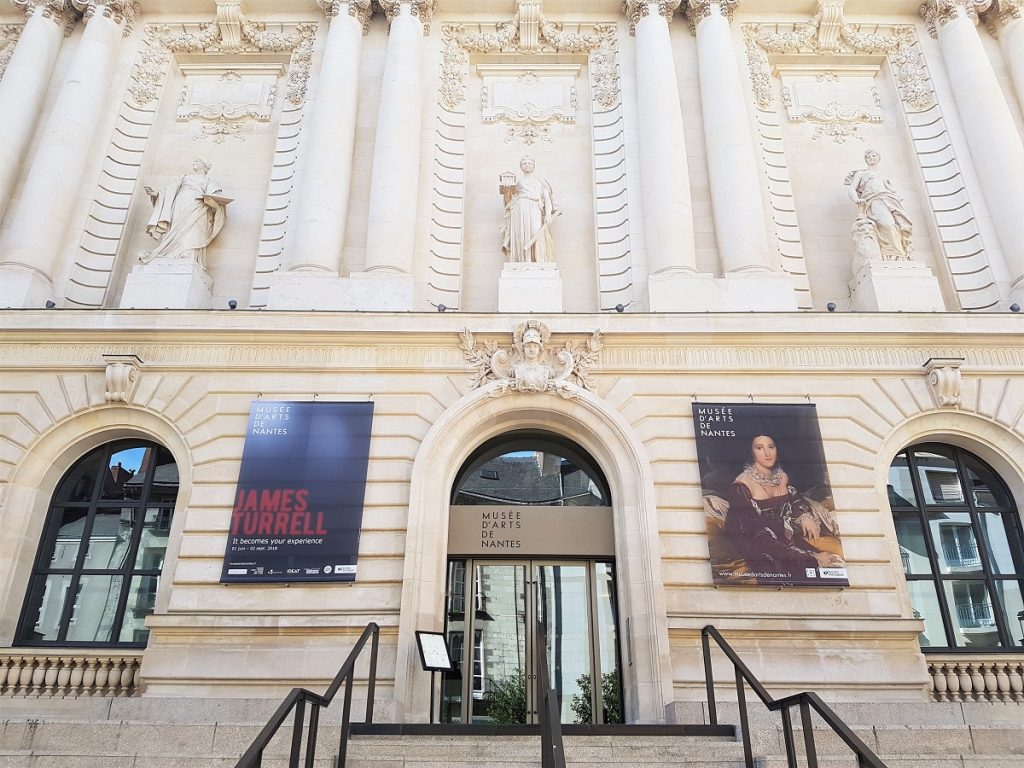
I arrived in Nantes just after lunchtime and after checking into my hotel, set off for a walk through the historic centre in the direction of the Musée d’Arts de Nantes (above).
The art gallery is located inside a beautiful old building and features works of art from the 13th to the 21st centuries by the likes of Rubens, Picasso and Max Ernst.
The gallery (bar a few exceptions) is laid out in chronological order and a number of the paintings seemed to be grouped together by theme, such as the human form, agriculture and the Impressionists.

My favourite painting by far was Claude Monet’s excellent Gondola à Venise, as it’s quite different to his most famous works of art. The painting features a purple and green gondola set against a white background and is strikingly effective in its simplicity.
The gallery’s other Monet, Les Nymphéas à Giverny, one of his series of waterlilies painted at his home in Giverny, was also superb.
The museum boasts some exquisite pieces by Rodin and a number of excellent works by Wassily Kandinsky, too.
The next morning, I was up bright and early, and left my hotel shortly after breakfast to find the streets of Nantes practically deserted.
I ambled through the streets, stopping first at the Passage de Pommeraye (above), a spectacular 19th century glass-roofed arcade that’s home to some of Nantes’s most exclusive shops.

My destination was the Chateau des Ducs de Bretagne (above, which I’ll write about in my next post as this post is already far too long) and from there, the wonderful Jardin des Plantes (below).
Nantes’s botanical garden was clearly the place to be on a sunny summer’s afternoon as it was packed with people.
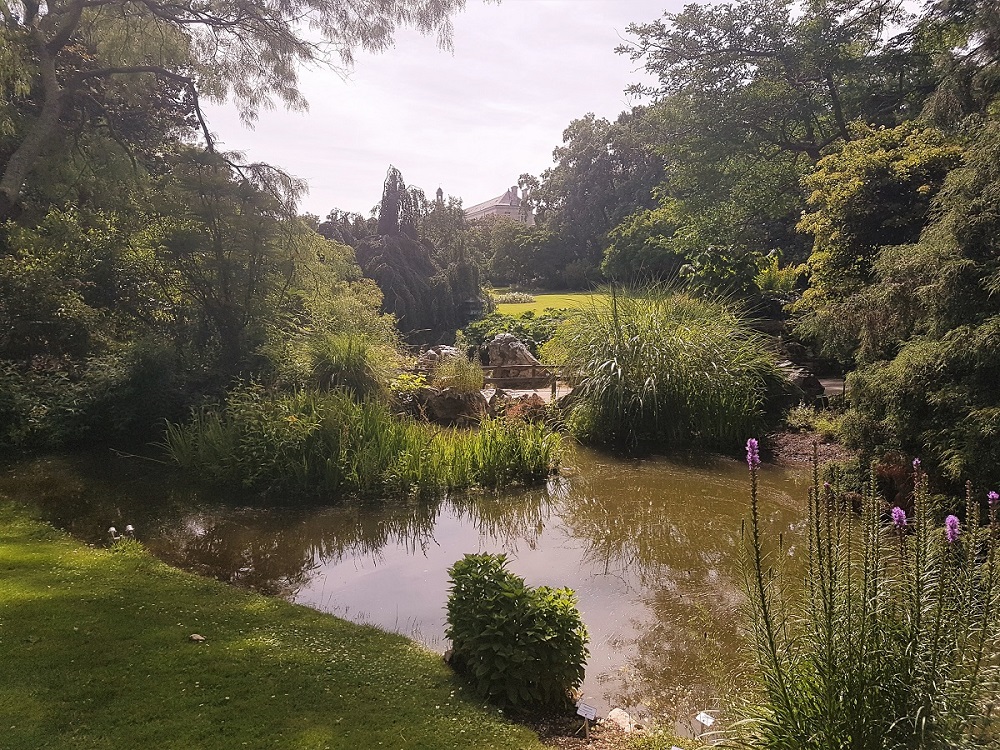
But despite the crowds, it was a relaxing, laid-back place and I happily whiled away half an hour or so reading my book on a bench before setting off to explore the park.
The botanic garden, which dates back to 1860, isn’t that big, but I spent ages ambling around, soaking up the scenery and taking my time looking at the many species of trees and plants.

The Jardin des Plantes is home to various intriguing features such as hothouses (above, all closed the day of my visit), ponds, a little farm and a winding, rocky trail that leads to the top of a small mound.

It also boasts a number of art installations, including a huge sleeping bear seemingly made from grass (above), an oriental bird house and a series of fountains that poured water as they moved up and down.
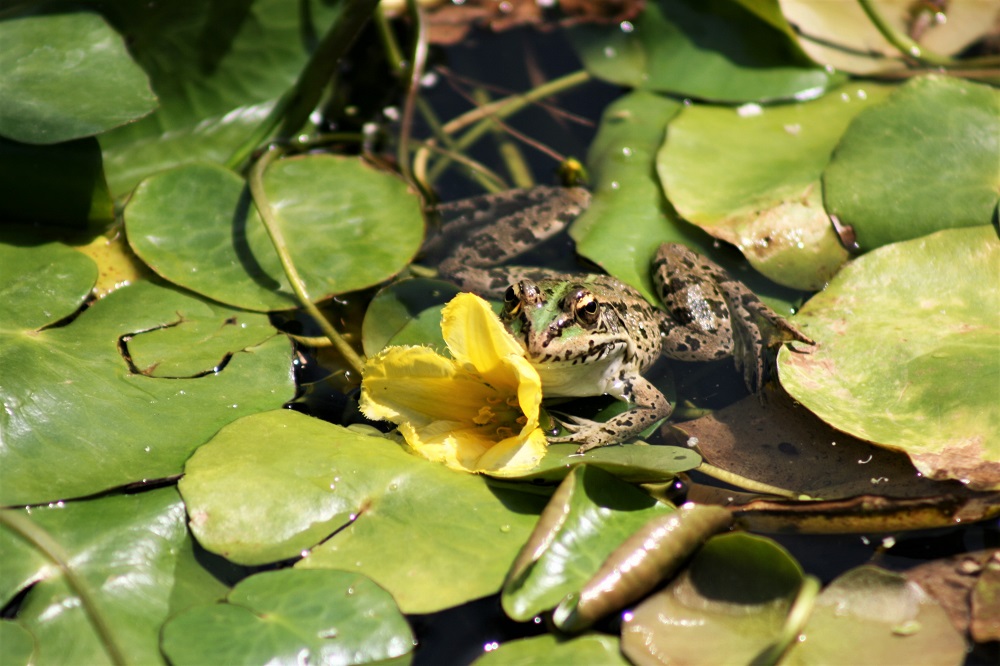
My favourite part of the park was the small lily pond near the hothouses that was filled with frogs and terrapins, and I spent a ridiculous amount of time taking photos of the many amphibians (above).
I loved the gardens and can see why they’re so popular – they’re pretty and peaceful with lots of elements to explore.
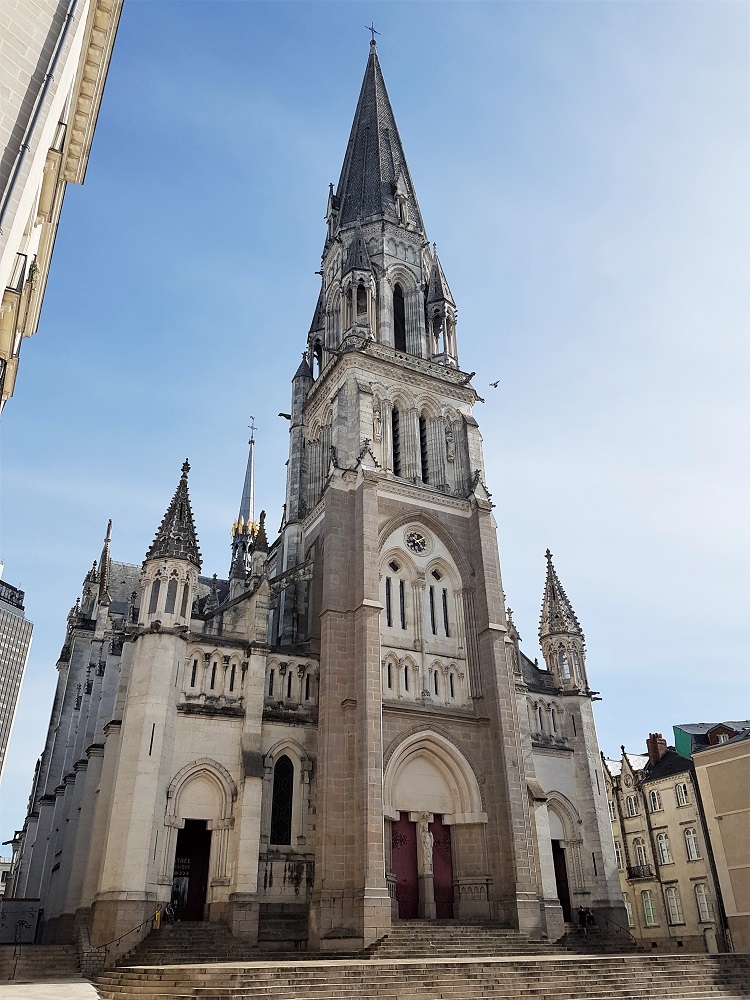
I finished my trip to Nantes exploring a few of the city’s many churches. The first church I visited was the neo-Gothic Basilique Saint-Nicolas (above), just off the city’s Place Royale.
Originally founded in the 11th or 12th century, the present structure dates back to the mid-19th century, when the formerly-small basilica was rebuilt to accommodate the area’s increasing number of worshippers.

The basilica was significantly damaged by a bombing raid during the Second World War when three bombs tore through the right aisle on 16 September 1943, and it was reconstructed between 1953 and 1974.
Inside, the basilica is an attractive space (above) with very high, stone vaulted ceilings and a lovely altar, behind which are a series of chapels boasting stunning stained glass windows in a sea of purples, pinks and blues.

From the basilica, I meandered through the city centre to another of Nantes’s celebrated churches, the église Sainte-Croix (above).
The small, elegant church has a very impressive spire and after a look inside, I ventured out to the church’s small, pleasant garden.
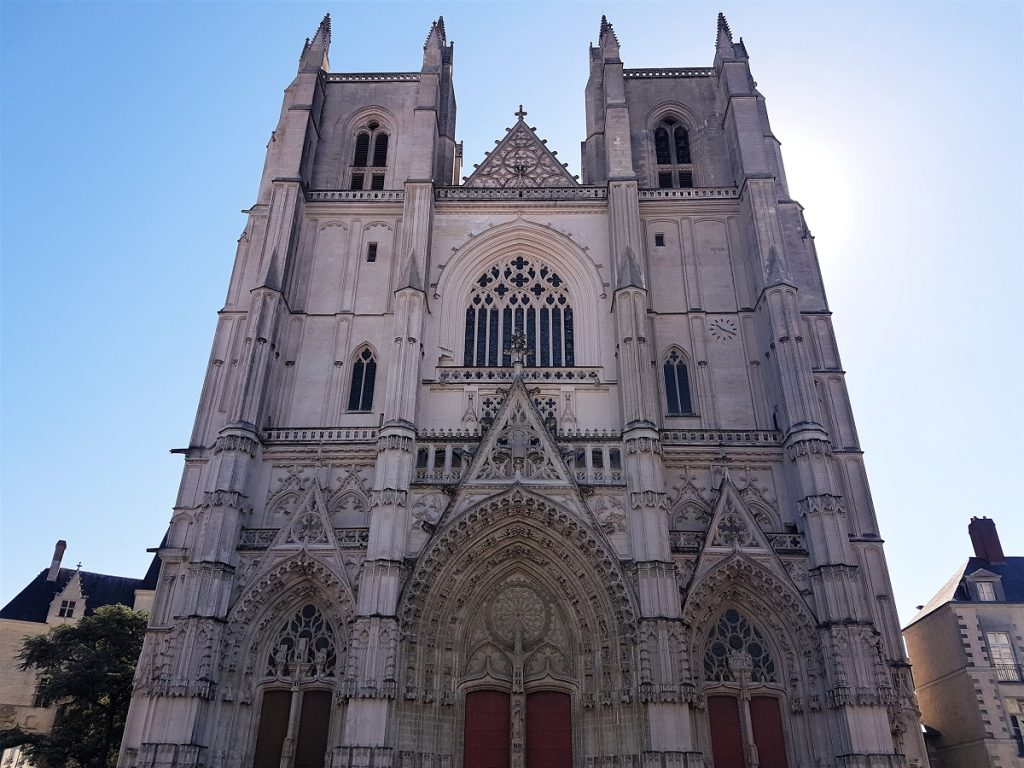
My final destination was the Cathédrale Saint-Pierre-et-Saint-Paul (above), which in summer 2020 was the subject of an arson attack by one of its volunteers.
I visited the cathedral before the attack and the first thing I noticed upon going inside was how light it was (below).
It’s a sophisticated, elegant and regal building, boasting cream-coloured stone walls and pale stained glass windows featuring lots of light pinks.
The cathedral is fairly large and houses the tomb of Fran?ois II, Duke of Brittany, and his wife Marguerite de Foix (below), the parents of Anne, Duchess of Brittany.
The lower end of the cathedral, meanwhile, is home to some sumptuous chapels, including ones dedicated to St Anne and the Virgin Mary.
Having seen everything there was to see inside the cathedral, I followed the signs outside to the crypt, only to find it was closed as it’s only open in July and August.

From there, I found myself in the enormous Rue Henri IV, so I walked around the corner to take a look at the nearby Porte Saint-Pierre (above).
The Porte Saint-Pierre is a well-preserved section of the old city walls and was built on top the old Gallo-Roman fortifications, which you can still see today.
I loved Nantes and felt very at home there. It’s an elegant, friendly city with more than a few excellent crêperies and shops. My whistlestop tour was a superb way to end an exceedingly pleasant sojourn in Brittany.
Info
If you’re arriving in Nantes via the Nantes-Atlantique airport, you can get a combined bus/tram ticket to the city centre or hop on the more expensive airport shuttle to the Gare SNCR.
If you opt for the bus/tram combo, the number 48 bus, which leaves from outside the arrivals hall and runs every 20 minutes, will take you to a nearby tram station. From there, hop on the number 3 tram to the city centre.






